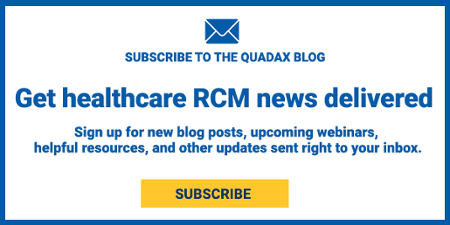Learn why traditional RCM automation falls short—and how to implement smarter automation that reduces denials, lowers costs, and boosts revenue in healthcare.
Despite years of investing in electronic health records (EHRs), bolt-on RCM tools, and advanced workflow systems, many healthcare organizations are still seeing denials rise and reimbursement fall. Why? Because automation alone isn’t the answer—meaningful automation is.
The Growing Gap: Investment vs. Outcome
The CAQH Index estimates that U.S. healthcare could save $20 billion annually by fully automating key administrative transactions. Yet, a recent HFMA survey found that denial rates increased for 82% of healthcare providers in the past year, and nearly half of those increases are due to inefficient processes or avoidable errors.
It's clear: patchwork solutions and disconnected tools aren’t solving the problem. They're often making it worse.
The Real Roadblock: Fragmented, Ineffective Automation
Many healthcare organizations believe they’ve "automated" their revenue cycle. But unless automation meets these four key criteria, it’s likely contributing to claim leakage, labor waste, and denied revenue.
✅ Hurdle 1: Automation must update the host system
If your clearinghouse flags errors but doesn’t feed corrections back into your EHR or billing system, you’re stuck in a cycle of repeat denials. Claims get fixed downstream, but the root issue goes unresolved.
The fix: Look for platforms that can maintain a clean claim rate of 95% or higher by preventing errors before submission. Modern workflow automation tools can significantly improve revenue cycle efficiency by routing claims based on customizable criteria, ensuring tasks are assigned to the right teams at the right time. These systems create a built-in audit trail for transparency and eliminate the need for manual tracking or fragmented communication. With the right automation framework, organizations can recover revenue faster and more accurately without adding complexity to staff workflows.
✅ Hurdle 2: Work queues need to do the work
Many tools stop at sorting claims into queues, leaving your team to manually resolve issues. That’s not automation.
Modern RCM automation uses AI and rules-based logic to route claims, trigger appropriate actions (like generating appeals or corrections), and escalate only the complex cases to staff. A streamlined, intelligent workflow is the foundation to effectively reduce claim denials and improve financial performance. By combining automation with smart process design, you can build a more resilient revenue cycle and reclaim time and revenue lost to avoidable denials.
✅ Hurdle 3: One-size-fits-all automation doesn’t work
Payers change rules constantly. Your organization’s billing processes evolve. Off-the-shelf automation can't keep up.
Look for solutions that combine standard edits with custom rules, allow for user-defined workflows, and can be easily updated without IT involvement. Advanced editing tools allow healthcare organizations to automatically detect and correct errors in real time, before claims are submitted to payers. By applying customizable rules and edits, these solutions help identify missing or incorrect data that could lead to denials or payment delays. With the right system in place, you can adapt to evolving payer requirements, minimize rework, and keep your revenue cycle moving smoothly.
✅ Hurdle 4: Automation must give a full-picture view
Achieving peak revenue cycle performance starts with understanding what’s working—and what’s not.
Modern reporting and analytics solutions help you identify performance gaps, analyze contributing factors, and explore cause-and-effect relationships to drive smarter decisions. Prebuilt and custom reports offer flexibility, while holistic dashboards provide a high-level view of performance with easy drill-down capabilities for root cause analysis. These tools empower teams across departments to stay aligned, focused, and responsive to evolving revenue cycle challenges. An effective automation solution should unify your revenue data and provide real-time dashboards and KPIs to track clean claim rates, denial trends, aging A/R, and more. (DI)
The Path Forward: Connected, Intelligent RCM Automation
As healthcare organizations brace for higher patient volumes, tighter margins, and increasing payer complexity, now is the time to rethink your automation strategy.
Quadax helps revenue cycle leaders cut costs, reduce denials, and increase collections by bringing automation, analytics, and integration together, so your team can focus on what matters: maximizing revenue and improving patient care.
Let’s talk about how we can help you automate smarter.


